

Today, when checking out some of my scorpions I noticed that one of the scorpions I collected in Zempoala (also spelled Cempoala), Veracruz (Mexico) was changing its exoskeleton (molting). Well, actually at first I thought it had died and was in some weird position. But when I picked up the plastic box I noted that something else was happening. So I grabbed my digital camera and started to take pictures.

The scorpion is a Centruroides gracilis (more commonly known as the Florida bark scorpion). In my experience this species can be easily found in Veracruz in various habitats, and in many other states in Mexico.
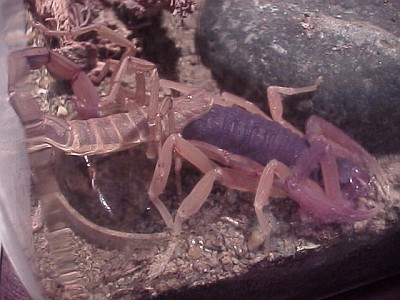
I keep this scorpion in a plastic box, which it probably is going to outgrow soon. It was quite difficult to take good pictures, also since the scorpion was very close to the plastic side of the box.
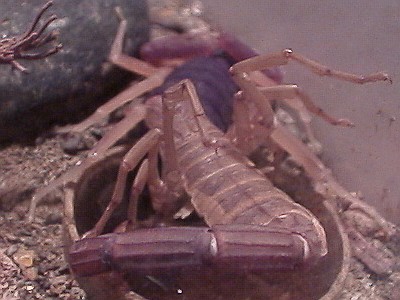
In the past, a younger scorpion belonging to the same species got its tail stuck in the old skin (exuviae). There are many things that can go wrong during a molt, so I was hoping that everything would go well. To be sure, I made the opposite side of the container a bit more moist, since I guess that was the cause of the problem during the molt of the young one.
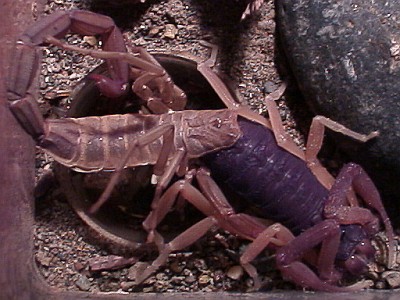
When I put the container back in its place, and checked on another scorpion (hidden underneath a piece of wood), I discovered that it had also changed its skin, without any problems even. From the look of it, it just had happened, notice the wax like appearance of the body of the scorpion.
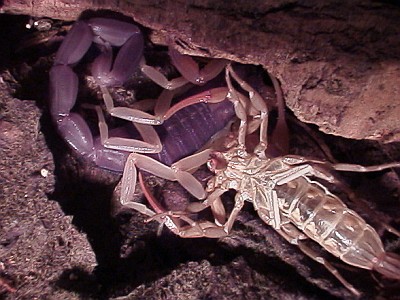
This scorpion was collected July the 3rd, 2005 close to Buenavista, a town near Cardel (Veracruz) and is also a Centruroides gracilis (Florida Bark scorpion). Since when I collected it I also found 3 exuviae of different sizes, probably belonging to this very scorpion, I can add another exuviae to the collection.
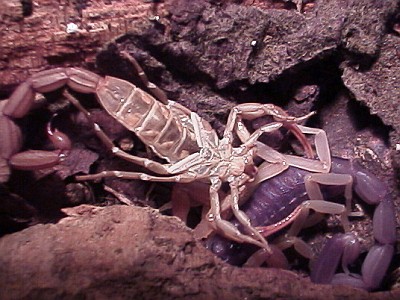
We have had several warm days, followed by a colder day with a lot of rain yesterday. Both scorpions belong to the same species, and I wonder if the change in weather has triggered the molting process.